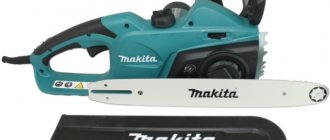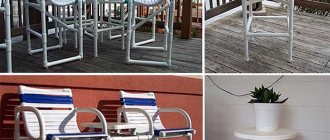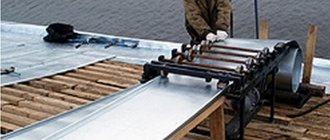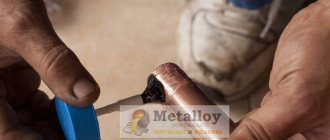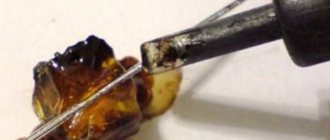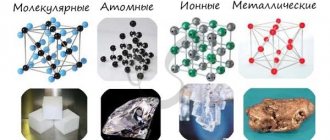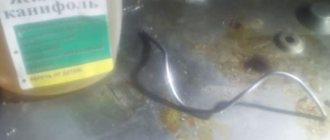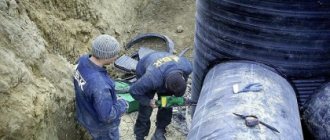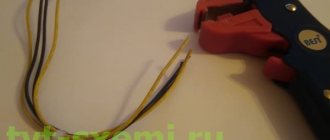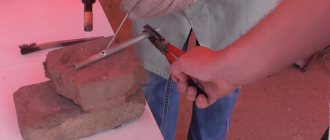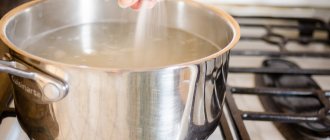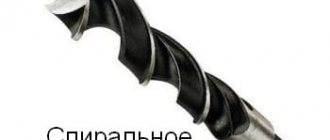Everyone knows that working with a good tool in any business makes the process faster and more efficient. This fully applies to radio electronics. Of course, if a person thoroughly understands a subject, for example, in repair, or in the production of something, he will be able to do the job with a minimum of tools. But if you plan to do something regularly, you think about how to make this process easier. Finally, it’s simply a pleasure to work with a quality tool. Anyone who has ever used a soldering station, I think, can compare the process of soldering planar radio components, even the same transistors in an SOT-23 package, with a regular soldering iron, and a soldering iron from a soldering station with replaceable tips. Having realized the need to purchase a tool, even with some material costs, the radio amateur begins to gradually purchase everything he needs for his work. In this article I will talk about some of the tools that I use when working on the manufacture of electronic devices, and when necessary, during repairs.
Hacksaw blade cutter
With its help, you can make a board without etching, separating the tracks that are not connected to each other by a groove cut in the PCB foil. This method is available, if, of course, the board is simple enough. Also, when repairing or making changes to the device circuit, sometimes it is necessary to cut the tracks on the printed circuit board. A cutter is also used for this purpose.
Hot glue gun
An indispensable thing when assembling a device in a case. For example, we need to display LED indications on the front panel. If switches and variable resistors are mounted on the case, and securing them is not difficult, with LEDs everything is more complicated. It is necessary that during operation of the device, if we accidentally press on the LED, it does not recess into the housing, which will certainly happen even if we insert the LED into the hole “with tension”. And so we turn on the gun, wait 5 minutes, a drop of molten glue, which, when cooled, will firmly fix the LED, and we’re done. Such a pistol costs only 40 rubles in retail stores of Chinese goods in our city “Fix price”. The only thing is that there is no power cord at all, and after 5-10 uses it had to be replaced, but this is not a problem for us? The glue sticks themselves cost only 6 rubles per piece, and they last a long time.
Set of needle files and files
When assembling a device in a case, we often have to expand the drilled holes and adjust them to the dimensions we need. To do this, I use different needle files and small files. The most popular are flat ones, used when you need to cut a hole for a switch or button, and round ones, when fitting holes, for example, for the shaft of a variable resistor, and for the same LEDs.
Tapered Aluminum Bar
A useful thing when we need to clean the hole for the output of a radio component in a printed circuit board that is filled with solder. Due to the fact that the rod is made of aluminum, solder does not stick to it during soldering. Most people use toothpicks for such purposes, the advantage of this rod is that it is conical, it can be inserted into the hole, even from the back side of the board, and when heated, expand the hole and free it from solder. But be careful not to tear off the contacts from the printed circuit board.
Solder for soldering non-ferrous metals
Solder for copper pipes is divided into two types: hard (high temperature) solder or soft (low temperature) solder. The choice of one or the other is determined by the specific application of the pipeline.
Soft solders.
have a melting point lower than that of copper (usually about 250 g). When using soft solders, it is necessary to use flux or a special paste based on it. By using flux at the soldering site, the adhesive properties of the surface are improved.
Hard solders.
They are made on the basis of copper with phosphorus or silver. This type of solder is suitable for soldering not only copper-copper or brass-brass joints, but also copper-steel. Hard solder is more resistant to tearing and abrasion.
desoldering pump
Needed to remove solder from contacts when desoldering radio components from printed circuit boards. Allows you to dismantle multi-lead parts without the risk of tearing off the contact on the track. With its help, transformers, microcircuits in Dip cores and more, any connectors can be easily soldered. They use it as follows: bring it to the soldering site, cock the spring, melt the solder with a soldering iron and press the release button on the destin pump. By creating a rarefied area of air near the contact, the solder is sucked into the desoldering pump. If it is not completely removed, cock the spring and repeat until the contact is completely clear of solder. Periodically we disassemble and clean the rubber ring on the piston from grains of solder.
A set of tools for soldering for a beginner: soldering iron, flux, solder + gift
Knowing how to solder is a good skill. It will help in repairing home appliances and electronics. This simple skill is quite easy to master. As with anything, practice is important. First of all, you need to acquire a minimum set of tools and materials. Let's list this simple “set”: Soldering iron, flux and solder. Everything was bought in one store, and despite the New Year's rush, I picked up the parcel from the post office today. The order was placed on November 19, that is, a little more than a month passed. Now let's take a closer look at each element of the set. 1) A soldering iron is an electrical device consisting of a heating element, a rod, an insulating handle, an electrical cord and a power plug. Cheap soldering irons consist of just these parts. Under the influence of electric current, the heating element heats up and heat is transferred to the rod (tip). The rod is usually made of copper. The temperature of the soldering iron tip is around 180-300 C. In our case, it looks like this.
As you can see on the box, there are soldering irons with different powers. In our case, it is 40W, which is enough for home use. The declared power corresponds to the real one - I checked the readings on the meter, it consumes exactly 40W.
On the box they wrote a small manual on how to use a soldering iron))
So the soldering iron looks good. The handle material is rubberized plastic. The handle is matte, non-slip. Assembly is acceptable. Power indicated.
The plug fits our sockets, the cable is quite long - 2 meters.
The sting is thin, made of some kind of light metal.
It’s convenient to use. Light weight.
2) Flux is a substance that facilitates soldering and prevents oxidation of the surfaces being soldered. If you do not use flux, the solder will not evenly cover the soldered surfaces of the conductors. Fluxes neutralize the oxide film on the metal surface. Our flux came in a small metal jar.
The jar turned out to be half empty, although the weight corresponds to the declared one. Most likely it is not filled completely, but half-filled, but for me it flowed to one side and froze like that.
Flux is good. It copes with its functions perfectly. 3) Solder is a low-melting alloy used for soldering. The main solder for radio installation is an alloy of lead and tin. You can, of course, use pure tin, but it is expensive, so tin-lead alloys are used. In terms of soldering strength, tin-lead solders are not inferior to pure tin. The most common solders are POS-61 and POS-40. The numbers 61 and 40 indicate the percentage of tin in the alloy. POS-61 contains 61% tin, in POS-40, respectively, 40%. The more lead there is in the solder, the darker it is. Naturally, in addition to standard solders, there are also improved ones that have one or another property (low fusibility, strength, resistance to aggressive environments). Our solder came in a small plastic container.
It is wound in the form of a spring, which is very convenient. As you use it, unwind it a little at a time. It should last a long time.
The weight corresponds to the declared one.
Here's a set. I received it today and tried it today. I did a short test drive, so to speak: In general, I have an ancient TV (with a kinescope) Samsung, and so its remote control stopped working
Having disassembled it, I saw this picture:
It is clear that the leg has broken off. I don’t know what this part is responsible for, but after soldering it in place everything began to work. I don’t solder very often, so I ask the professionals not to laugh at my “snot”)) - the main thing is what works.
When I turned it on for the first time, the soldering iron smoked a little until everything burned out. After that it works - without smoke) Soldering is very convenient, I'm glad I bought it.
PS There was still a little surprise waiting for me in this package. Tinidil gave me a gift:
The thing is cheap and not everyone needs it, but it will come in handy for me, I’ll take it to work. It helps when charging your phone if the sockets are high from the floor and there is no table nearby. It requires a little work, because the base where you put the phone is very slippery and smooth. You can glue a small rubber mat or somehow make it less slippery.
Shuttle
Used for winding transformers on a toroidal (ring) core. First, we calculate the total length of the winding wire and wind it onto the shuttle. Then we thread the shuttle into the core and begin winding. This method allows us to wind transformers much faster than if we threaded the wire into the core each time with our hands. The width of the shuttle should be less than the diameter of the core together with the wound winding.
Set of hollow needles for desoldering
I ordered this set of needles from Ali Express. The needles are made of stainless steel and the solder does not stick to them during soldering. The diameter of the needles allows you to desolder pins, for example, from 0.8 mm, which is suitable for soldering microcircuits in a Dip package, to 2 mm, which will allow you to desolder even a transformer from the board if necessary. The set also includes an awl, which is convenient for disconnecting the contacts of the microcircuit in the Dip package if they accidentally “stick together” during soldering. To do this, we warm up the stuck together contacts and pass an awl between them, thus separating them.
Fluxes.
They are used before soldering to remove oxide film and other contaminants from the surface of the base metal and solder, as well as to prevent oxidation during soldering.
Fluxes are active chemicals. Divided into 2 types.
- Passive: rosin, wax, resin, fat.
- Active: hydrochloric acid, zinc chloride, boric acid, phosphoric acid and so on.
Most installers like to work with acid, as it is faster. But I would still advise using rosin. If acid fluxes are not handled correctly, the connections can quickly become unusable.
When working with active fluxes (acids), use a hood, a protective mask to protect against splashes during boiling, and a regular respirator.
After completing the soldering process, it is necessary to thoroughly wash the parts with gasoline or alcohol.
When soldering refractory solders, active solders are mainly used in powder form. For aluminum, special fluxes are used, which some manufacturers label as such. Flux for aluminum: F-59A, F-61A.
There are also solders with rosin, two in one. But they are inferior in quality of the final result.
Dismantling braid
Used to remove solder from the contacts of the part being soldered. It is used as follows: dip a piece of braid in alcohol-rosin flux, place it on top of the contact and heat it with a soldering iron tip so that all the solder from the contact is absorbed into the braid. After use, cut off a piece of braid. Also, the used piece can be used for tinning paths in the manner described below.
What soldering accessories are needed?
Of course, in addition to a soldering iron, tin and rosin, a solder cannot do without such soldering auxiliaries as:
- Braid for desoldering - will help at first to correctly calculate the required amount of solder. This braid consists of many thin copper wires, which are coated with a layer of flux before use. Using this braid is very simple. To remove excess solder residue, you need to place the braid in the soldering zone, then press it with a soldering iron tip and heat the solder.
- Soldering iron tip cleaner - to ensure that your soldering iron tip looks like new every time, you must use tip cleaners. Each time after soldering, it is enough to wipe the soldering iron tip with such a cleaner so that it is always clean.
- A soldering tip activator is an equally important soldering accessory if a regular tip cleaner does not help. Also, the soldering tip activator is used to clean special types of tips that do not tolerate abrasive cleaning.
- Tweezers and nippers - where delicate work is needed, tweezers and nippers always come to the rescue.
- The soldering aid kit is a very useful set that includes all kinds of clamps and holders. A convenient and efficient tool when you need to solder boards and small radio components.
Before you start soldering, be sure to tin the soldering iron tip. First, give it the required shape with a hammer, then sand it with sandpaper, and only then cover the surface of the tip with flux and molten tin.
Chinese tweezers
The thing looks unreliable; they have no notches on the working part of the jaws. With the tweezers that are bent, it is convenient to hold the SMD parts while soldering on the board. Considering that they cost me only 1.2 dollars per pair, I ordered express from Ali, I think they are worth the money. Of course, this is not a complete list of tools that radio amateurs use in their work, but only the main ones. But having such an arsenal, you can already collect anything you want. And if for occasional repairs at friends’ house you don’t need such a variety, then it’s better to have these things at home. AKV was with you . Technology Forum
Soldering iron.
The main tool for soldering is a soldering iron. Hand tools used for tinning, soldering, for heating parts, flux, melting solder and introducing it to the contact point. There are a lot of types, below we will tell you how to choose.
Types of soldering irons:
- Hammer, end. Heats up from external sources. This class of instruments is associated with it.
- Arc soldering irons.
- Electric soldering iron.
- Gas.
- Thermal air.
- Infrared.
- Blowtorch.
How to choose a soldering iron?
If you are wondering this question. then most likely you do not need professional equipment for complex tasks. But you just want to tin the conductors or learn how to rivet microcircuits with a regular end cap. Select
- Microcircuits - 10-20 W power.
- Radio components - power 30-40 W.
- Universal - 60 W.
For thick conductors, from 4 mm square, already from 100 W are used. Also, if you are going to work at a workplace and not tin the wiring in a junction box, then you should think about buying a soldering station. It has the ability to adjust the temperature.
Which is convenient for complying with the conditions for limiting temperature when working with certain materials, and not burning them. And you won’t have to buy another one when you need to melt refractory solder.
